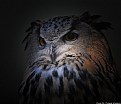|
|
|
Nitish Kanabar
{K:2618} 12/6/2004
|
Thanks Amit. I've tried the multiple exposure technique with success on other light sources. However my moon shots are almost always blown out. I'll try the ND-8 filter. Your image has the moon exposed perfectly and that is the effect I'm looking for.
|
|
|
|
 Amit Saha
Amit Saha
 {K:3131} 12/6/2004
{K:3131} 12/6/2004
|
U can take the multiple exposures and then merge in PS, old school technique could be 2 use a neutral density grad filter...check this picture taken w/ a grad 4 filter http://www.usefilm.com/image/625783.html (but I could hv got better results w/ a grad 8 filter)
|
|
|
|
|
Nitish Kanabar
{K:2618} 12/5/2004
|
Thank you for your excellent explanation Judi!
|
|
|
|
 Amit Saha
Amit Saha
 {K:3131} 12/5/2004
{K:3131} 12/5/2004
|
Shooting w/ multiple exposures & then merging in PS is definitely one option...other option is 2 use a neutral density gradual filter (ND grad4 or 8) that vary from dark to transparent...can b used 2 varying elements adequately. check this picture to get some idea (http://www.usefilm.com/image/625783.html)
|
|
|
|
|
Riccardo Corsini
{K:17796} 12/4/2004
|
Interessante controluce, molto bello!
Ric.
|
|
|
|
 Judi Liosatos
{K:34047} 12/4/2004
Judi Liosatos
{K:34047} 12/4/2004
|
Nitish you can do this by taking two photos. A tripod is the best way so there is not movement in the frames. Take one photo where the moon is focused and another photo where the surroundings are focused to how you want them. In your photo programme copy one image and paste as a new layer and then mask out the are of the top layer that you don't want leaving you with an image where all areas are in sync.
Hope that helps.
Judi
|
|
















